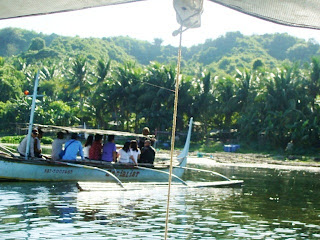
Vaccination programs for cows are designed to protect animals in the herd against disease caused by infectious organisms, such as viruses or bacteria. Vaccines contain killed or modified live organisms which do not cause disease but stimulate the animal's immune system to mount a response. A vaccine cannot prevent infection but will increase the animal's ability to throw off the infection or lessen the severity of the disease.
Cows aged Six (6) month old and above except pregnant were given a shot of 5 ml. Hemorrhagic Septicemia Vaccine, against a highly fatal bacterial disease seen mainly in cattle. In susceptible animals, the clinical signs often progress rapidly from dullness and fever to death within hours. Because the disease develops so quickly, few animals can be treated in time, recovery is rare and outbreaks are particularly common during rainy weather, when the organism can spread readily. It is the Provincial Veterinary office challenge to administer complete immunization to cows before rainy season . A total of Twenty Eight (28) or 100% of qualified cows in the Barangay, mostly intended for buy and sell and not for farming were vaccinated in the activity. Each shot of 5 ml. Hemorrhagic Septicemia Vaccine estimated cost is Fifty Pesos (P50.00) and a total of P1,400.00 worth of medicine were used in cow vaccination . The vaccine that will give them Four (4) month of protection was free supply from Bureau of Animal Husbandry. Identified enabling factors were the capabilities of Dr. Rommel Marasigan, the veterinarian and his assistant Mr. Nestor mastery of the art of vaccination, quick movements with safety precautions and full understanding of animal behaviors.
Cow owners were very cooperative and they fully support the program due to high cost of private veterinarian vaccine and professional fee amounting to Nine Hundred Pesos (P900.00), in additional with their service priority mostly intended for large farms.




 Government officials and Militaries of Batangas led by the Governor, Honorable Vilma Santos Recto joined the "PADYAK LABAN SA KRIMINALIDAD". They actually rode a bicycle and ran the streets of the City to show their support against criminality and campaign for more peaceful province...
Government officials and Militaries of Batangas led by the Governor, Honorable Vilma Santos Recto joined the "PADYAK LABAN SA KRIMINALIDAD". They actually rode a bicycle and ran the streets of the City to show their support against criminality and campaign for more peaceful province...


















